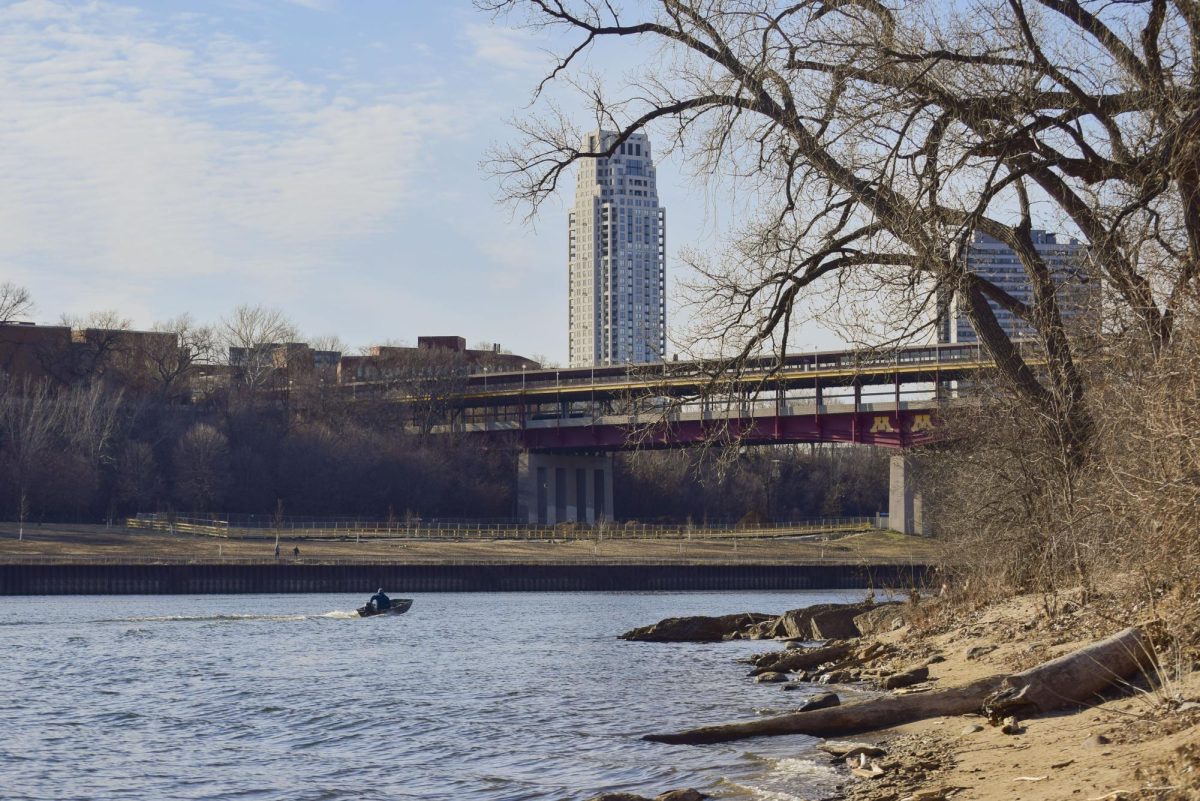When my feet tire of walking across our concrete-laden campus, I head down the steps behind Coffman Memorial Union and make my way to East River Flats Park.
With a large, open green space framed with massive cottonwood trees along the Mississippi River, this urban park is a much-needed reprieve from the bustle of campus life and has served as a constant source of intrigue, beauty and absurdity in my life.
I’ve seen turkeys balancing precariously in towering oaks, met a woman talking to a tree on the hillside and witnessed a group of millennials raving to EDM music in a remnant prairie.
But most of all, I’ve found solace amid the chaos of college life — a winding trail through the floodplain forest, a quiet bench along the water and an elusive screech owl I’ve named “Screechy.”
Jean Larson, the faculty lead in nature-based therapies at the Bakken Center for Spirituality and Healing, said she valued having the Mississippi River near her office when she was a graduate student at the University of Minnesota.
“There is a part of us on a DNA level that feels better when we’re in nature,” Larson said. “It’s a really simple remedy for a lot of students’ stress.”
She explained the idea of “attention restoration theory,” which suggests when we focus our attention on natural scenery, our brain has an opportunity to reboot and restore itself.
The occasional smell of sewage and the unrelenting rumble of cars from the West River Parkway may not make for the ideal city escape, but as a student at the University without a car, East River Flats is one of the only places I can go to immerse myself in nature within the Twin Cities.
While living in a metropolitan area may feel claustrophobic, Larson said even having a screensaver of a nature spot on your computer or having plants in your bedroom has proven beneficial to mental health. In other words, you don’t need to plan a backpacking trip in pristine wilderness to reap the restorative benefits of nature.
In fact, Larson said experiencing nature in any form for just 20 minutes a day is “the dosage” needed to achieve a positive effect on your mind and body.
For students interested in nature-based therapy, Larson recommended exploring courses through the Bakken Center, which offers classes in topics like forest bathing and therapeutic horticulture.
Not only do the natural areas along the Mississippi serve as convenient places to destress, but the river itself provides a massive recreational and cultural benefit to Minneapolis.
Alex Roth is the conservation director for Friends of the Mississippi River, a local non-profit dedicated to improving the river’s ecological health and making public access equitable across the metropolitan area. He said his organization works with thousands of volunteers each year to provide educational opportunities, build community and foster pride in the river.
“If we’re just protecting habitat and locking it away from the public, and we’re not letting people experience the healing benefits and the passion that can come with helping to steward nature, we’re not doing the right thing,” Roth said. “This is one of the world’s great rivers, and for people to be able to use it and recreate alongside it is really of most importance.”
He explained how the health of the river is in constant jeopardy due to threats from invasive species, pollution and tree diseases. Friends of the Mississippi River hopes to increase appreciation for the river and the amenities it provides to the city.
Roth said the portion of the Mississippi that cuts through Minneapolis is a natural gorge, a geological feature that provides sweeping views of the skyline as it rises from the limestone bluffs.
“I think to be able to walk alongside or drive across this river any day of the week, and see people recreating on it, whether it’s fishing, canoeing and kayaking on the river shows how important this resource is for us, and how much the river gives back to us,” Roth said.
For students looking to explore other parks and natural areas close to campus, Roth recommended the Mississippi Gorge Regional Park and Father Hennepin Bluff Park, which offer serenity and solitude while still providing a feeling of connection with the city.
Growing up in a Chicago suburb, my house was two miles from the closest natural area — a perpetually muddy forest preserve sandwiched between two busy roads. But Minneapolis has forests, waterfalls and prairies at the city’s backdoor, a gift too precious to take for granted.
But of all the parks scattered throughout the city, a visit to East River Flats feels most rewarding.
Where else can you spy on stoners hiding on trash-laden beaches, hear the boom of a rowing coach’s megaphone and watch hordes of crows fly overhead in their yearly migration, all without moving an inch?















Sandra Burk
Mar 21, 2024 at 11:25 am
Was this a parking area in the 70s? I used to park my 59 MGA roadster done there behind the hospital. (Before expensive garages were built. It was cheap to park down there but tricky to get out in the slippery weather
Cat Corn
Mar 21, 2024 at 9:42 am
Lovely piece and made me feel like I was along the river saying hello to Screechy myself. Nice job as always Huppke.
Mark Hove
Mar 21, 2024 at 8:30 am
“There is a part of us on a DNA level that feels better when we’re in nature,” – Love it!